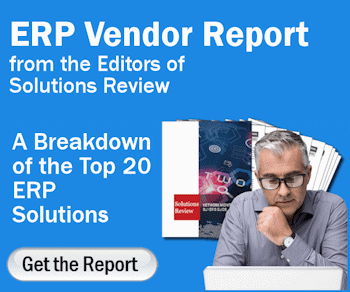Top 3 ERP Supply Chain Trends for 2020


What are the top ERP supply chain trends for 2020? As we see the end of another year, people have been answering that question for the past two or three months. Preparing for those in the ERP industry for what’s to come. Next-generation technology has come to the forefront, and powerful emerging tech capabilities are having a great influence.
The supply chain ecosystem is typically consisting of manufacturers, suppliers, distributors, retailers, and customers. Supply chain management (SCM) involves planning, execution, control, and monitoring of supply activities within those realms. An ERP solution takes care of the physical aspects of supply; which includes storage and transportation and the market aspect of effectively managing demand and supply to meet customer demands.
Widget not in any sidebars
Top ERP Supply Chain Trends for 2020
More Investment in Automation
The 2019 Warehouse/DC Operations Survey research showed that ERP systems or legacy warehouse management system options were the most popular choices. This year’s survey showed more people bringing automation to their processes, with 23% mentioning that compared to 15% last year. On top of that, 45% recognized that improving information technology in their warehouses was important for managing costs.
“The need to automate more aspects of an operation and find further efficiencies is certainly on the forefront for managers,” says Norm Saenz, Managing Director at St. Onge Company. “The reality is that the labor market is very tight, industrial space is tight, and these factors all play into the importance of automation, the value it can bring, and the speed of the payback. We are in active times right now as we move deeper into the realm of e-commerce, so it’s not surprising to see responses like healthy capex plans, more automation, and more people realizing they need good data with which to make smart decisions.”
Research from Emerald Insight shows that there is a positive and significant relationship between ERP systems (integration, material management, production planning, and controlling), and SCM performance. The findings of the Emerald Insight study imply that the successful implementation and the effective usage of ERP software can contribute toward enhancing SCM performance in many ways such as, integration of internal business processes, enhancement of information flow among different departments inside the company, improvement of the company’s relationships and collaboration with outsourcing suppliers, customers, and supply chain partners.
Greater Need for Cloud-Based Solutions
Cloud solutions are increasingly gaining attention of business leaders and quickly replacing legacy, on-premise solutions. In their latest press release, Gartner said the worldwide public cloud services market is forecast to grow 17% in 2020 to total $266.4 billion, up from $227.8 billion in 2019.
Cloud-based ERP systems offer the same level of functionality and security as their on-premise counterparts, while also reducing the sunk costs and customization woes that plague traditional software. Not many companies need an on-premise system anymore, so naturally, the market for cloud SCM systems is expected to grow in 2020.
“At this point, cloud adoption is mainstream,” said Sid Nag, research vice president at Gartner. “The expectations of the outcomes associated with cloud investments therefore are also higher. Adoption of next-generation solutions are almost always ‘cloud-enhanced’ solutions, meaning they build on the strengths of a cloud platform to deliver digital business capabilities.”
David Stephans, CRO of Rootstock Software said:
“I think the big thing we see in ERP for 2020 in the markets we focus on, which are manufacturing, distribution and supply chain, is a move to the cloud. To the true cloud. It think too many companies today in their efforts to digitally transform, get closer to the customer, better respond to their customer demands, react to changes in the supply chain, and be responsive, are held back by legacy technology that isn’t connected, isn’t flexible, and isn’t modern. So I think we’ll continue to see manufacturing, distribution and supply chain companies move to next-generation cloud technologies.”
Increase of IoT Integration
With the rise of the Internet of Things (IoT), we are seeing an entire new frontier open up before our eyes. IoT is transforming business models as we know it, adding a level of digital intelligence to the devices workers use on an everyday basis. From simply manufacturing and pushing products out the door, to becoming highly engaged service providers – the IoT has a profound impact on ERP systems and how manufacturers are accomplishing their day-to-day activities.
That being said, 2020 is likely to include an increase in companies using the IoT sensors and ensuring the respective data gets factored into the information shown in an ERP interface. Some supply chain leaders would normally lose sight of a product after shipping it out, for instance, IoT capabilities give them the ability to monitor each product so they can then better advise customers about when they should expect to receive it and offer additional services.
In the case of forecasting and inventory control, the IoT has a transformative effect on both. By allowing point-of-sale inventory levels to be shared directly to the shop floor, the IoT can give manufacturing companies a more profitable make-to-order model instead of the forecast-driven model. This applies to replenishment of inventory stored as well.
Looking for more? Download our Enterprise Resource Planning Buyers Guide for free to compare the top-24 products available on the market with full page vendor profiles, key capabilities, an ERP software market overview, our bottom-line analysis, and questions for prospective buyers.
And don’t forget to follow us on Twitter, Facebook and LinkedIn for all the latest in the ERP space!






















